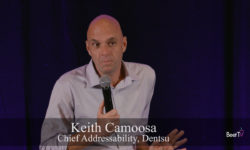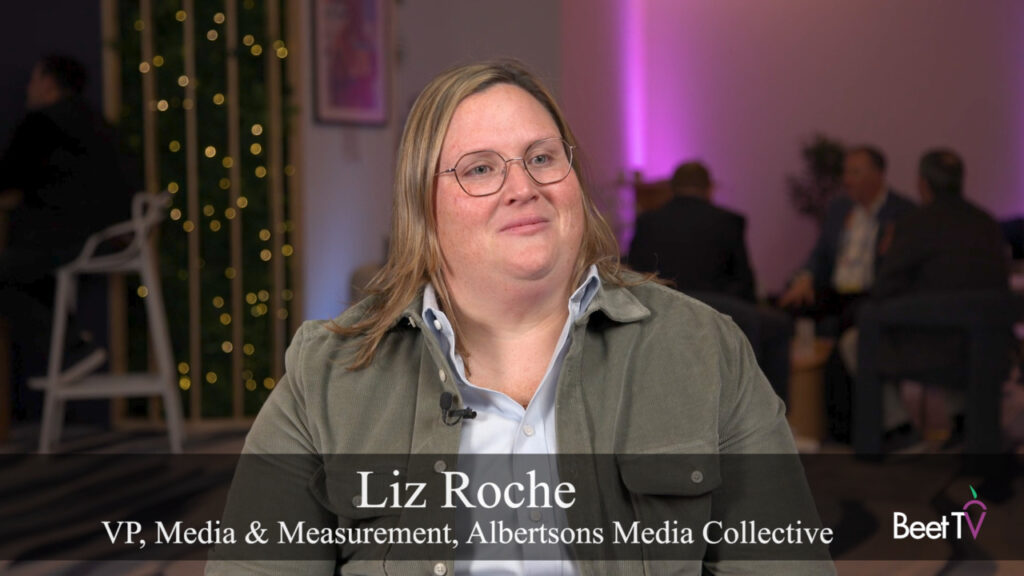SAN JUAN, Puerto Rico – As the season of spring rises, many in the media industry are hoping for a fresh start.
One of the leading post-cookie targeting candidates is brewing a new version. Media owners are pondering building a streaming business on live sports, just as they did with linear.
At the apex of these, Ashutosh Gangwar believes advertisers could be big beneficiaries.
In this video interview with Zach Rodgers for Beet.TV, the general manager, TV partnerships, at The Trade Desk, explains his vision.
Sports 2.0
More than half of American TV viewers are finding new ways to access content – especially live sports – and that spells quite the opportunity for advertisers across multiple interactive channels. https://t.co/YurWh5uIAf
— The Trade Desk (@TheTradeDesk) January 14, 2022
“It is pretty clear at this point that the consumer wants to watch live sports, not on cable, not on their traditional broadcast, they want to watch it on streaming,” Gangwar says, citing a YouGov December 2021 survey commissioned by The Trade Desk.
“Live sports was, for a long time, for the linear space, they were using it as their saviour, which is like, ‘Hey, this is how we build massive audience’.
“As those networks are moving into streaming, they’re realising that live sports could be the exact same thing for streaming. If you can take these big tent-pole events and you can put them on streaming, you can build massive audience.”
Stream dream
The Trade Desk’s survey echoed the momentum captured by YouGov’s survey for Tubi last year, which found strong willingness for streaming sports and 74% of viewers happy to receive ads in return for free sports.
Clearly, with the streaming audience footprint growing, multiple industry players are now going after streamed live sports.
Whilst live sports was historically a strong pay-TV driver, for The Trade Desk’s Gangwar, it can thrive with ad support.
‘100% attention’
“Live sports is very unique in a way that it gives an advertiser an opportunity that they have never had,” he says. “It allows them to target the user, their own custom audience, in a place and time where they’re most engaged.
“In the overtime, they’re just throwing this media away. So, from an advertiser’s perspective, that additional 10, 20, 30 minutes is the media that they have traditionally thrown away.
“Programmatic and in livestream allows them to monetize that, those intense moments when you have customers’ 100% attention and target them in those specific moments, in a manner that they want.”
Targeting fans
The road to those moments? The confluence of streaming sports and a new advertising technology, Gangwar thinks.
Unified ID 1.0 was originally developed by The Trade Desk as a universal cookie ID, aiming to soothe the main pain of traditional third-party cookie matching – the drop-off in match rates that comes from trying to align so many different systems.
But The Trade Desk decided to build a new version, UID 2.0, when Google announced it would be deprecating the cookies.
Since then, it has attracted a growing list of adoptees.
Identity backbone
“It is an identifier that’s tied to the consumer directly, and it allows the brand to find this consumer across different platforms,” Gangwar explains. “It could be on a PC, in a display environment, it could be on a streaming environment.
“The UID2, it’s backbone of identity. It allows the advertiser to find them across different devices. In a live sports environment, they can go take data that they have built in a display universe, and then tie it to the streaming environment where the data may be much harder to find.
“(They can) just tie those two together and target their own consumers in those moments when the consumer is most engaged.”
You are watching coverage from Beet Retreat San Juan 2022, presented by AppScience, Infillion, MadHive, SpringServe, Univision & VideoAmp. For more videos, please visit this page.














































